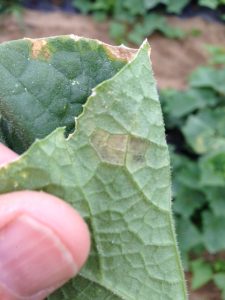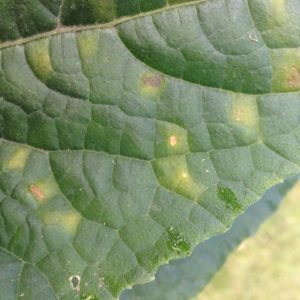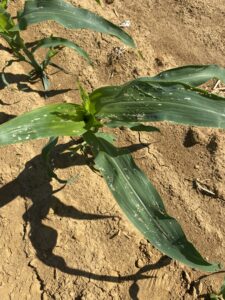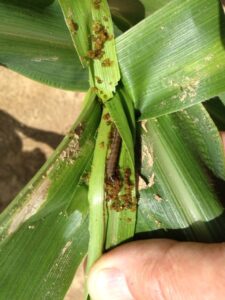Cucurbit Downy Mildew Update
Cucurbit downy mildew (CDM) was discovered by IPM technician Chris Cloutier in Morris County, just south of Morristown on Friday. Suspect leaves from pumpkin plants were incubated and ultimately produced spores on Sunday. All NJ growers of pumpkins and winter squash should treat fields accordingly. Look for chlorotic areas bordered by veins on the upper leaf surface (photo at lower right). If conditions are moist, dark sporulation may be found on the lower leaf surface (photo at lower left).

 Useful materials for CDM may be found in the Pumpkin and Winter Squash Section of the 2024/25 Commercial Vegetable Production Recommendations. Downy mildew specific fungicides should be added to the existing powdery mildew fungicide program.
Useful materials for CDM may be found in the Pumpkin and Winter Squash Section of the 2024/25 Commercial Vegetable Production Recommendations. Downy mildew specific fungicides should be added to the existing powdery mildew fungicide program.


